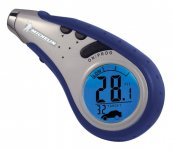Not the same old subject.
Most advice is to start with posted pressure for your Spyder and go from there.
What criteria do you experts use to determine the change in pressure needed. I'm using the Quatrac 5 on the fronts and Kumho AST on the rear.
I have tried several pressure settings from 15 to 20 for the front and 18 to 26 for the rear and can not really feel that much of a difference. What should I be looking for or feeling for? I now there is no hard and fast rule but I could use some advice.
Thanks for any help.
Dave
Most advice is to start with posted pressure for your Spyder and go from there.
What criteria do you experts use to determine the change in pressure needed. I'm using the Quatrac 5 on the fronts and Kumho AST on the rear.
I have tried several pressure settings from 15 to 20 for the front and 18 to 26 for the rear and can not really feel that much of a difference. What should I be looking for or feeling for? I now there is no hard and fast rule but I could use some advice.
Thanks for any help.
Dave

